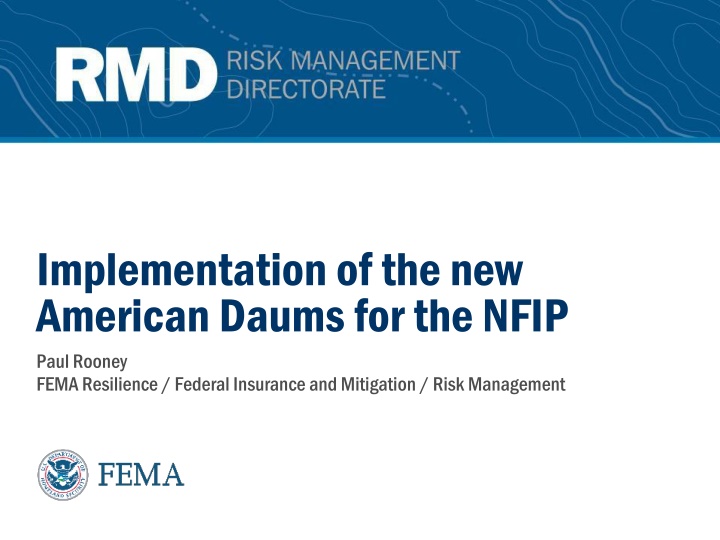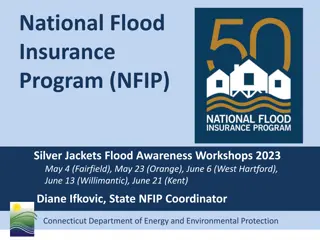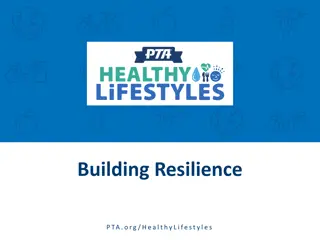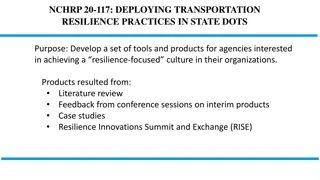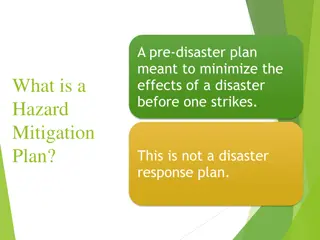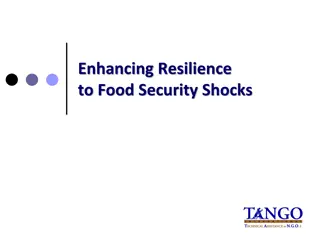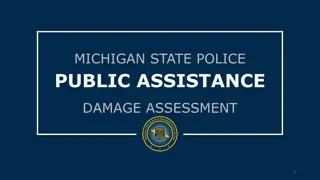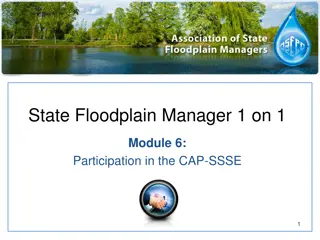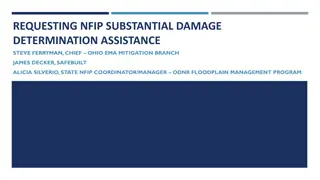Implementation of the New American Daums for NFIP - FEMA Resilience
The National Flood Insurance Program (NFIP) is crucial for insuring property against flood risks. FEMA's efforts to improve reference frames and address challenges in implementing new standards are highlighted. The community's need for growth in utilizing accurate data and the importance of legal and regulatory compliance are emphasized.
Uploaded on Mar 16, 2025 | 0 Views
Download Presentation

Please find below an Image/Link to download the presentation.
The content on the website is provided AS IS for your information and personal use only. It may not be sold, licensed, or shared on other websites without obtaining consent from the author.If you encounter any issues during the download, it is possible that the publisher has removed the file from their server.
You are allowed to download the files provided on this website for personal or commercial use, subject to the condition that they are used lawfully. All files are the property of their respective owners.
The content on the website is provided AS IS for your information and personal use only. It may not be sold, licensed, or shared on other websites without obtaining consent from the author.
E N D
Presentation Transcript
Implementation of the new American Daumsfor the NFIP Paul Rooney FEMA Resilience / Federal Insurance and Mitigation / Risk Management
National Flood Insurance Program NFIP insures about $1.3 Trillion in property To be eligible, communities must agree to minimum building standards and integrate hazards into land use codes Property owners in high risk areas must purchase insurance to be eligible for various federal programs and most conventional mortgages To implement these requirements FEMA publishes flood maps that define: The boundaries of the high risk area (horizontal) The elevations to which buildings must be built in the high risk area (vertical) Depends on good data, particularly accurate elevations 1
Benefits of Improved Reference Frames NFIP Implementation New construction permits, real estate transactions, and flood insurance need determination of flood risk status and minimum building elevation. Improvements could reduce surveying costs for thousands of precise horizontal and vertical measurements referenced to NSRS Mapping clarity and accuracy Most of our inventory is geospatial data that is combined with other datasets to dynamically generate flood maps Boundaries and elevations have big financial impacts Property owners and communities want clarity and trust 2
Current Challenges FEMA has struggled with the many realizations of NAD83 The National Flood Hazard Layer is a large GIS dataset of 20+ layers covering CONUS, AK, HI, PR, CNMI, Guam The NFHL is currently in NAD 83 (1986) Tried to implement newer realization of NAD83 several years ago and had to revert because there was insufficient support in the commercial tools NADCON5 and the technical bulletin are transformational 3
Community needs to continue growth Ecosystem needs to continue to mature Data producers and publishers must be diligent in defining the reference frames NGS and others must make sure accurate, authoritative information is available Vendors must provide tools and documentation that users can understand and be transparent about limitations 4
Legal / Regulatory Issues FEMA maps are adopted into community zoning and impose insurance requirements on lenders and homeowners. Clarity and accuracy are critcal. To maximize the benefits of digital mapping FEMA has a policy framework that relies on the NSRS to define the NFIP flood hazard information When FEMA officially changes the maps, it requires administrative actions by communities Once the boundaries and elevations are published by FEMA they are fixed administratively and enforced by Federal, state and local laws 5
Uncertainty / Approximation / Change over Time Uncertainty is very difficult to work with in an legal / regulatory framework Legal concerns arise when conversions introduce even small shifts in relative positions Consistency over time is important for credibility and to reduce stakeholder burden Flood hazard on FEMA maps cannot be linked back to a discrete set of control and measurements relative to that control. Many data sets are integrated and analyzed and final outcome is based on product reviewed by the community and the public. 6
Path Forward for FEMA Move operations to NAD83 (NSRS2011) Enhance capability and training Plan for policy implementation of new datums Implement transformations for legacy data Continue to evaluate as programs evolve 7
Q&A 8
